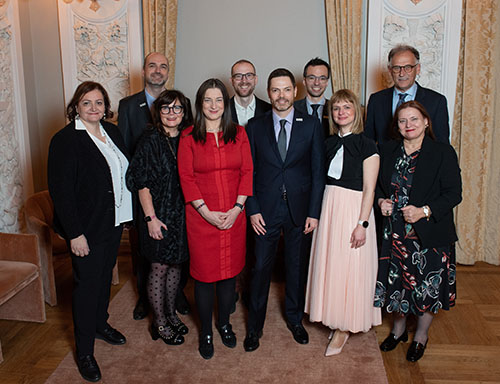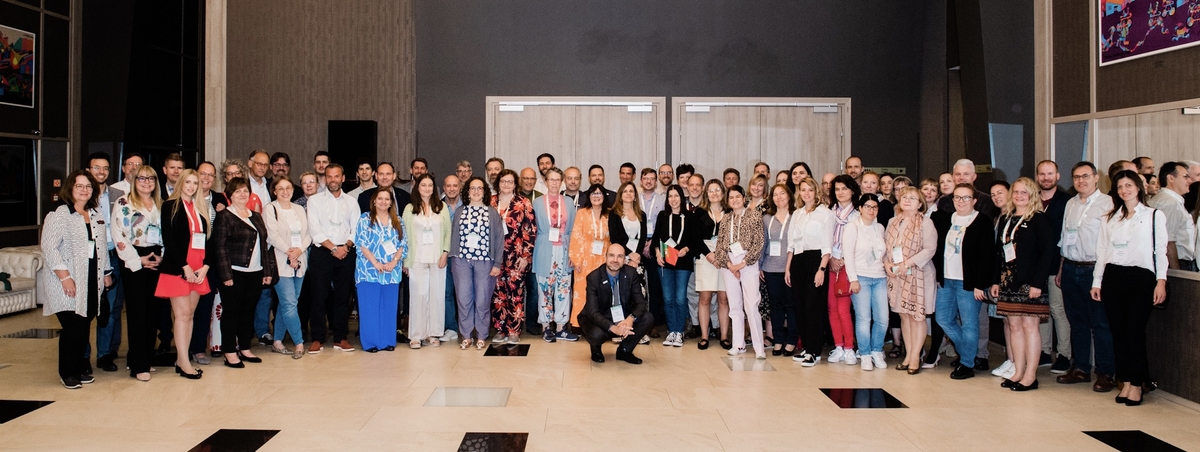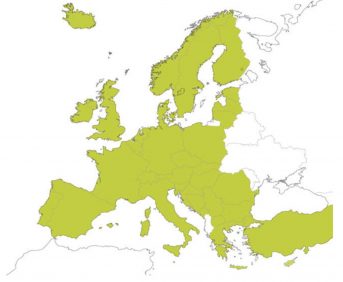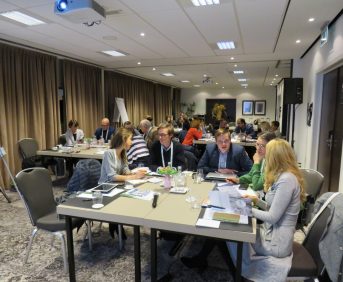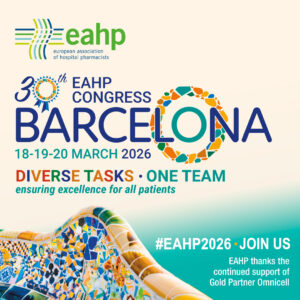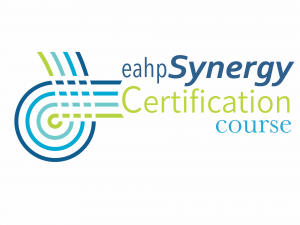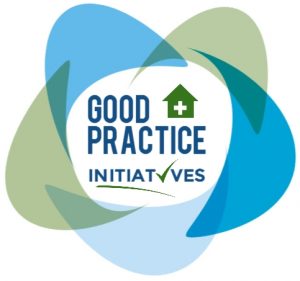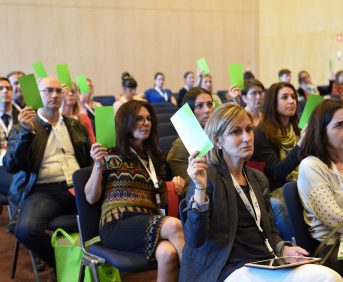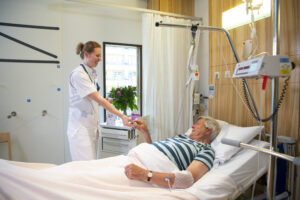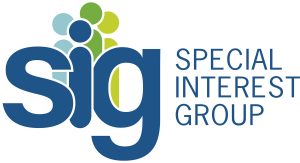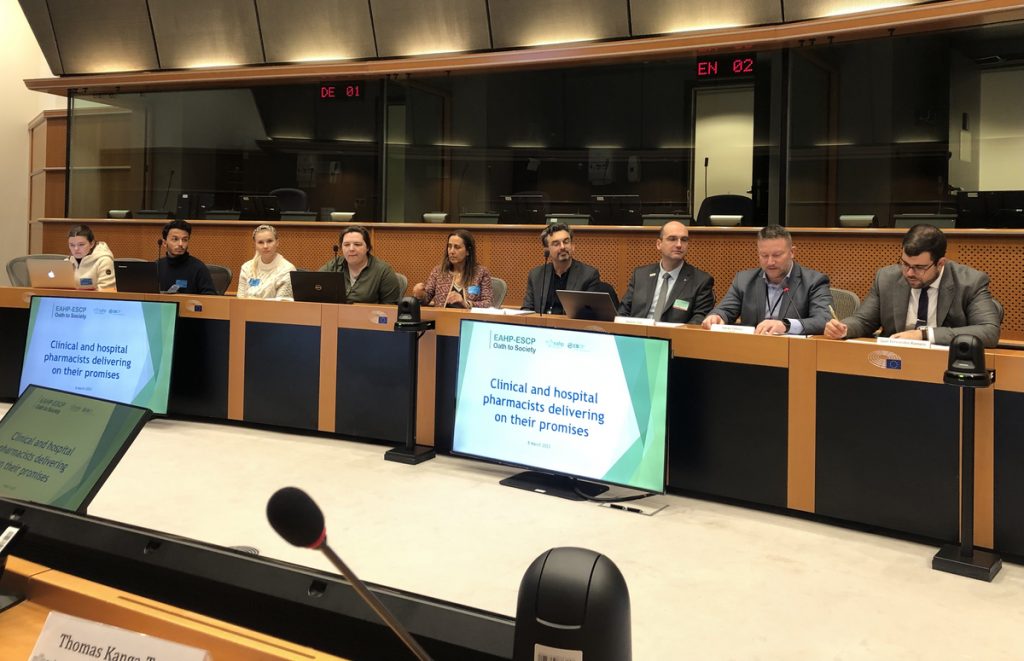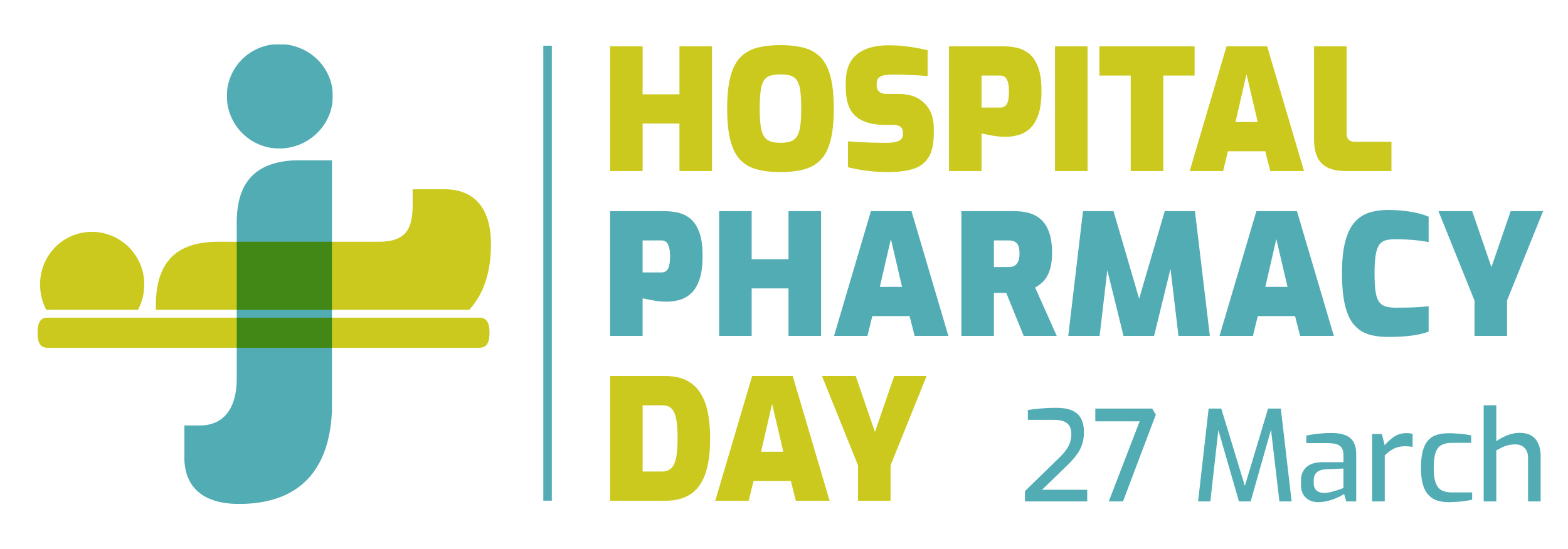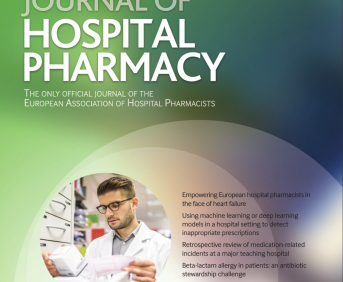CAPTURE DATA AND CONQUER CLOTS (submitted in 2019)
Pdf

European Statement
Patient Safety and Quality Assurance
Why was it done?
VTE is a collective term for blood clots usually in the legs or lungs. In Europe, there are 544,000 VTE-related deaths every year. VTE is responsible for more deaths than AIDS, breast cancer, prostate cancer and motor vehicle accidents combined. SVPH Pharmacy Department has been conducting annual Clinical Audits on VTE prophylaxis using a paper based system. However, the process was time consuming and limited the frequency of audit and the opportunities for identifying opportunities for improvement in compliance. SVPH has a high number of patients with high risk of VTE including Medical Oncology patients and Surgical patients. Compliance rates over preceding years were running at 75%; however, it is hoped to achieve a target of 90% compliance by 2020.
What was done?
An App was developed to collect data on venous thromboembolism (VTE) prophylaxis compliance across St Vincent’s Private Hospital (SVPH)
How was it done?
Different technologies were explored and an App developer was selected. Funding was sourced. Stakeholders were invited to get involved in the development team; this part was challenging and a lot of negotiations were had as to how the format of the App would be developed and carried forward. The next step when all the details had been finalised was launching the App.
What has been achieved?
Every month seven patients are randomly selected for audit and an auditor (in SVPH a pharmacist) inputs the data on the App which the lead auditor analysis. At SVPH compliance has increased from 75% prior to the app, to post implementation of the App where monthly VTE audits were conducted on all inpatient wards. The results are 92% compliance with VTE prophylaxis for 2018, and for 2019 up to Sept 2019 96% compliance.
What next?
It is hoped that this App will be a useful tool that will help SVPH and other hospitals to achieve a higher compliance with VTE prophylaxis guidelines and help prevent clots in patients. This App can be customised to individual hospital requirements. Technology has been shown to assist with clinical audit and will be used in various projects to make auditing easier and faster and therefore help healthcare workers to provide a better service to patients.
ROUTE TO CLINICAL PHARMACY: THE EXCHANGE PROGRAMME EXPERIENCE (submitted in 2019)
European Statement
Clinical Pharmacy Services
Author(s)
Chiara Inserra, Antonio Solinas, Chiara Panciroli, Branden Nemecek, David Zimmerman, J.Douglas Bricker, Piera Polidori
Why was it done?
Successful implementation of clinical pharmacy services are associated with improved prescribing practices. SIFO includes clinical pharmacy in their mission to line up with Section 4 of the European Statement on Hospital Pharmacy and is striving for implementation through advanced trainings for IHPs. The aim of this EP was to provide real world clinical pharmacy training to IHPs.
What was done?
Through international collaboration between Duquesne University School of Pharmacy in Pittsburgh (PA-USA) and the Italian Society of Hospital Pharmacy (SIFO) a clinical pharmacy exchange programme (EP) was established to provide clinical education to Italian pharmacists interested in advancing the profession. From 2010 to 2018, SIFO provided several grants to allow Italian hospital pharmacists (IHPs) to participate. In 2018, three IHPs from across Italy were selected for a 1 month experience to gain experience and insight into practices that they may use in their facilities.
How was it done?
The clinical training was created by Duquesne University to provide IHPs educational and first-hand clinical skills based on American clinical pharmacy practice and education. The training was individualised for IHPs’ interests including didactics and practical training. Sessions to discuss IHPs’ progress were conducted with the Dean and faculty of the programme.
What has been achieved?
IHPs had the chance to observe American pharmacy education and compare it to the Italian one. American university training was practical, well-coordinated with clinical activities, and based on a trustful teacher-student relationship. During practical training IHPs shadowed American Clinical Pharmacists (ACP) specialized in different areas: Infectious Disease, Cardiology, Oncology, Emergency Medicine, Internal Medicine, Community Pharmacy, Ambulatory Care. They were able to observe how ACPs validate prescriptions and are actively engaged in direct patient care, participating in bedside multidisciplinary rounds and making recommendations on therapies (drug interactions, dose adjustments, antibiotic selection). IHPs saw how technology investments, prioritisation of care, and availability of skilled personnel underlie American hospital pharmacy practice.
What next?
IHPs gained baseline clinical pharmacy skills to enhance care at their facilities; however, the widespread implementation of clinical pharmacy in Italy requires education reform, enhanced resources and integration of pharmacists within a multidisciplinary team. Implementation of small projects through collaboration with universities should be considered in the Italian hospital setting.
OPTIMISING WORKFLOW AND MEDICATION IN THE ACUTE WARD − BETTER USE OF PHARMACISTS’ SKILLS (submitted in 2019)
European Statement
Clinical Pharmacy Services
Author(s)
Mia P von Hallas, Trine RH Andersen
Why was it done?
Physicians in acute wards have limited time to see all patients. Time for medication history, reconciliation and review is limited, due to great patient turnover. The physicians did not consider the pharmacist medication review alone as a contribution to the workflow or to relieve the high workload.
What was done?
Through user surveys among the physicians in the Acute Ward, pharmacist tasks were adjusted to benefit the physician’s high work flow. Before the survey, pharmacists performed medication reviews which were communicated to the physician. The adjusted pharmacist tasks on the ward includes medication history, reconciliation and transfer of the medication to the electronic medicine module (Epic), securing up-to-date medicine data during hospitalisation.
How was it done?
A questionnaire was developed regarding four areas (Pharmacist competencies, Pharmacist tasks, Pharmacist medication review, Multidisciplinary teamwork) and distributed among the physicians. Based on the anonymous responses, the pharmacists adjusted their tasks to include medication history, medication reconciliation and transfer of medication to Epic, complying with the suggestions in the questionnaire survey. Obstacles were low percentage of respondents (15/33 (45%) prior to the initiative and 12/39 (31 %) after), and the large replacement of junior physicians in the period between surveys.
What has been achieved?
Pharmacists feel more part of the multidisciplinary team and attitudes towards the pharmacist service among physicians has changed. A new survey after implementation of the new workflow showed that 73% found medication reconciliation was a pharmacist task, compared to 29% before. After implementation, 90% of physicians believed that pharmacists could do medication review (67% before intervention). The acknowledgement that pharmacists were able to transfer medication to Epic was increased from 20% to 90%. The attitude has changed from considering pharmacists as medication advisers to considering pharmacists as part of the multidisciplinary team in the ward.
What next?
The questionnaire survey will be repeated annually to continually improve the workflow and contribution of clinical pharmacist services to the heathcare professional team in the acute ward.
IMPLEMENTING A NEW PHARMACEUTICAL CARE PROCESS IN SURGERY (submitted in 2019)
Pdf

European Statement
Clinical Pharmacy Services
Author(s)
Sarah POGGIO, Anne-Sylvie DUMENIL, Sandrine ROY, Claire HENRY
Why was it done?
BPMH on admission has been performed in these departments since 2011. An analysis of the process and prescriber use of BPMH highlighted an underutilisation; average consultation rate was 29.8%. The main reasons were the online publishing interval of the BMPH and competition with the AC report which also displays medication. A previous study showed a 70% rate of patients with unintended differences between BMPH and the AC report.
What was done?
We redesigned the pharmaceutical care process for programmed patient circuits in orthopaedic and visceral surgery by providing the “best possible medication history” (BPMH) in the patient’s electronical medical record (EMR) before anaesthesia consultation (AC).
How was it done?
Due to a lack of coordination, we exchanged using surgery with anaesthesia schedules to select patients, thus improving prioritisation. We created support documents for students, describing how to conduct a phone interview in order to reassure unfamiliar patients, to gather useful data (GP, pharmacy, prescription) to produce a BPMH, to visit inpatients when admitted to confirm the BPMH’s accuracy and to assess patient satisfaction with the process. We trained 6 students and presented our work at an anaesthetist staff meeting.
What has been achieved?
Among 195 patients included from June to October 2019, 70.2% BPMH before admission were successfully published online (137/195), 67 went through the complete care path (from home to discharging), 12 never came for AC and/or surgery, 58 were published but waiting for patient’s admission and 58 failed. The reasons we failed to publish on time included inability to reach patients (31.6%), lack of sources (21.1%), time shortage before AC (17.6%), surgery cancellation (14.0%) and refusal (7.3%). 1.58 (±0.85) calls were needed to reach a patient, 13 BPMH required modification after admission (19%), and patient satisfaction on average was 5.11/6 when asked whether the call, the medication management during hospitalisation and the confirmation interview went well. Finally, the consultation rate of BMPH evolved from 29.8% in 2017 to 72% since we changed practices.
What next?
Implementing this new process in the care path streamlines information transfer between the different stakeholders (anaesthetists, surgeons, pharmacists) and provides a better integration of pharmaceutical care in surgery wards as an efficient support system for prescribers.
INTEGRATION OF THE CLINICAL PHARMACIST IN A MULTIDISCIPLINARY TEAM IN A BURNS UNIT
European Statement
Clinical Pharmacy Services
Author(s)
Ángel Guillermo Arévalo Bernabé, Pilar Lalueza Broto, Jordi Serracanta Doménech, Jacinto Caparrós Baena, José Manuel Collado Delfa, Jordi Aguilera Sáez, Romy Rossich Verdés, Pablo Sánchez Sancho, Juan Carlos Juárez Giménez, Maria Queralt Gorgas Torné
Why was it done?
The burns unit of a third-level hospital includes a patient’s great heterogeneity depending on his population group and his clinical condition (extension, degree and depth of his burns, etiological agent of the burns and associated comorbidities), which makes the managing of these patients complex and they need multidisciplinary solutions. In addition, extensive burns provoke physiopatological alterations that involve changes in the pharmacokinetical and the pharmacodynamical modelling of some drugs. The knowledge that the pharmacist has about the changes that take place in vascular dynamics, the clearance and the distribution volume of the drugs, and the degree of union from these to plasmatic proteins, makes his active participation in the care of the burns patient, and in the optimisation of his pharmacotherapeutic plan, very interesting.
What was done?
The integration of the pharmacist into a multidisciplinary group of assistance to the burns patient constituted as the Managing Committee of Cases and was integrated by plastic surgery, intensive medicine, intensive paediatric medicine, preventive medicine, infectious diseases, psychiatry, psychology, social work and infirmary, as well as pharmacy.
How was it done?
A protocol was devised that standardises and systematises the review of the pharmacotherapeutic plan of all patients in the burns unit, including burn critical and paediatric. Also, there is included a model of record and codificate of pharmaceutical interventions. The multidisciplinary group meets weekly and every patient is analysed from all clinical points of view, the pharmacist intervening in relation to the pharmacotherapeutic and nutritional plan.
What has been achieved?
The active integration of the pharmacist has been achieved in the clinical group of assistance to the burns patient. In addition, there has been created a collaborative attitude that has benefited joint projects of investigation. The degree of acceptance of the offers of modification that the pharmacist realises is 90%.
What next?
The following step must be, depending on the obtained results, to establish improvement assistance measures, including the accomplishment of protocols and the development of investigation projects that help to generate knowledge about the use of some drugs in burns patients, such as immunoglobulin or proteolitic enzymes for the extraction of bed sores.
IMPLEMENTATION OF A NEW CLINICAL PHARMACY SERVICE WITHIN A NEWLY LAUNCHED SURGICAL ADMISSIONS PROCESS
Pdf

European Statement
Clinical Pharmacy Services
Author(s)
Dora Mueller, Maria-Theresia Pichler, Karin Kirchdorfer, Kora Koch
Why was it done?
Prior to the implementation, insufficient time resources did not allow for clinical pharmacy services (CPS) on all surgical wards. Existing cover was not efficient or effective as drug-charts were often not available or patients discharged before pharmacy suggestions were implemented. The integration of the CPS into the centralised admission process instead of the wards resolved these shortcomings and facilitated pharmacy input to all surgical patients using this admission process.
What was done?
A central surgical admissions process was launched at a 450-bed teaching-hospital in April 2018 in which patients are seen five days before surgery by an interdisciplinary team. A new clinical pharmacy service (CPS) was implemented on-site to review patients’ medical history comprising three consecutive steps:
1. Medicines reconciliation is completed based on existing patient-consultation records.
2. Recommendations for switching drugs to the hospital formulary on admission are noted on the drug chart.
3. Medication review is carried out to improve inpatient medication safety, and changes are communicated to medical staff via e-consult.
How was it done?
This proactive concept highlighting the advantages of interdisciplinary CPS and reflecting international evidence (e.g. patient safety, patient care, workload reduction for medical and nursing staff) convinced hospital management of its need. Resource implications included allocation of a pharmacy office on-site, development of a standard operation procedure and support for interdisciplinary teamwork on-site.
What has been achieved?
Between April and September 2018, records of all patients using the new process (n = 1527) were reviewed by a clinical pharmacist. At least one drug-related recommendation was made for 38.6% (n = 589) of all patients taking medication. This development enhances the clinical pharmacy workforce at our hospital and contributes to the quality of the admission process. Feedback from medical and nursing staff, hospital and quality management was positive throughout. We observed an improved level of awareness, higher numbers of requests for other CPS and a better understanding of the clinical pharmacists’ role within the healthcare team.
What next?
This initiative reflects how CPS can be expanded and optimised by seizing the opportunity and using existing resources. This model may be adapted for other hospital inpatient settings.
PROGRAMME OF PHARMACOTHERAPEUTIC BENEFIT TO THE SOCIO-SANITARY CENTRES OF A SPECIFIC HEALTH AREA THROUGH THE HOSPITAL PHARMACY SERVICE
European Statement
Clinical Pharmacy Services
Author(s)
Gregorio Romero Candel, Maria Jesus Sanchez Cuenca , Nieves Cano Cuenca, Jose Marco del Rio , Julian Castillo Sanchez, Luna Carratala Herrera
Why was it done?
The healthcare provided in the SSC is not fully integrated into the structures of the National Health System. These patients present a higher risk of adverse events related to pharmacotherapy, due to patient factors, with the treatment, the health system and the institutionalisation. The integral approach of the pharmaceutical benefit was necessary for improving the efficiency, safety, health and economic results due to the process using drugs and other health products in the SSC.
What was done?
A pharmacotherapeutic benefit model has been started through the hospital pharmacy to the Socio-Sanitary Centres (SSC) of our health area. A pharmacotherapeutic management system based on the evaluation and selection of drugs and diet therapy items has been established.
How was it done?
An adherence protocol was made to the hospital pharmacy service, with the benefits that were to be provided to them. A guide was prepared with drugs and nutritional supplements that were available to them according to the Pharmacotherapeutic Guide of the Hospital Pharmacy Service, thus guaranteeing the most efficient products. A request model of both drugs and dietotherapics was developed for the SSC, assigning each centre one day per month to request the order and another day of dispensation. Finally, a calendar of distribution routes for each SSC was prepared.
What has been achieved?
For 12 months, eight SSC have been assigned to this programme, with 538 patients. Twelve shipments have been made to each centre, which have been provided with a total of 682,484 units of 223 active ingredients. The dispensation in diet therapy contained 28,045 units of 13 specialties. It has been possible to improve the pharmacotherapeutic coverage of these patients and reduce the expenditure on drugs in the area through centralised supply.
What next?
Development of follow-up programmes for patients with high health or economic impact drugs. Also, the adherence of new SSC, as well as increasing the dispensing portfolio, and achieving the integration of information systems, to have a total traceability from the patient to the different assistance levels.
OPTIMIZATION OF INTRANET COMMUNICATION TO THE CLINIC
Pdf

European Statement
Education and Research
Author(s)
Nina Kærgaard Hansen
Why was it done?
The initiative was performed to investigate the accessibility and usability of the current intranet in order to improve intranet information and communication from the hospital pharmacy to the clinic.
What was done?
Workshops with usability tests were performed with four different professions who are expected to use the intranet information and communication from the hospital pharmacy.
How was it done?
Workshops for selected professionals including pharmacists, pharmaconomists and nurses were held. The workshops consisted of four parts:
1. Video capture and recording test: Participants were asked to find specific information on the intranet. Comments, clicks and movements of the mouse were recorded during the task.
2. Sorting and prioritization the pages: Participants were given screen shots of 57 pages from the intranet. The participants were asked to sort the pages in three categories: need to know, nice to know and insignificant.
3. Evaluation of selected texts: Participants were given 5 examples of texts from the intranet and asked to assess if the text was relevant and understandable.
4. Structured focus group interview: Using a structured interviewguide the use and challenges experienced by the participants were explored.
What has been achieved?
From the present initiative it was found that the structure of the intranet was not optimal and did not reflect the daily needs from the users. The results from the workshops provided a clear guideline on how to restructure the intranet. It is important to make short cuts and optimize search function.
In addition, the initiative revealed how to improve texts:
– Write shortly, concisely and action oriented: “Tell us what to do”.
– Write the most important first, then elaborate and insert links to learn more.
– Use subheadings for skimming the text.
What next?
A campaign is planned to advertise the new intranet structure. Number of users and subscribers on the intranet pages is followed to see if the activity increases. Editors have been educated to write texts that are short, concise and written in an action oriented language
IMPLEMENTING A NATIONAL PORTFOLIO OF EXTEMPORANEOUS PHARMACEUTICAL PREPARATIONS USED IN DANISH HOSPITALS
Pdf

European Statement
Introductory Statements and Governance
Author(s)
Janne Jensen, Solvej Wandy Pedersen, Susanne Nørregaard, Karin Herkell, Anne Thestrup Nielsen, Anita Gorm Pedersen
Why was it done?
A group of hospital pharmacists representing all hospital pharmacies in Denmark have in a previous study identified and slimmed a national portfolio of extemporaneous pharmaceutical preparations used by Danish hospitals from a total of 2,754 preparations down to approximately 750 preparations being considered of clinical importance. Without a common overview of the national portfolio there will be initiated production of duplicates and almost identical products resulting in a large and inconsistent portfolio.
The purpose of this GPI was to make the national portfolio of extemporaneous pharmaceutical preparations accessible to all hospital pharmacists in Denmark and to implement a common procedure to evaluate preparations before adding them to the national portfolio to avoid duplets and obsolete products.
What was done?
A common national procedure for adding new preparations to the national portfolio was developed and implemented to avoid duplets and to ensure a uniform quality and appropriate risk assessment of the preparations.
How was it done?
A national database was developed and tested. Each hospital pharmacy entered their own extemporaneous pharmaceutical preparations in the database. Also, the extemporaneous pharmaceutical preparations manufactured by community pharmacies and used in the hospitals were entered in the database.
One hospital pharmacist in each of the five regions in Denmark was appointed as gatekeeper for the national portfolio. A template for an application form for new preparations was developed. When a physician requests a new preparation the application form will be completed by the clinical pharmacist. It is forwarded to the gatekeeper who will evaluate the preparation before approving it as a candidate for the national portfolio.
What has been achieved?
430 extemporaneous pharmaceutical preparations from the hospital pharmacies are entered and quality approved in the database. 255 extemporaneous pharmaceutical preparations manufactured by community pharmacies were entered in the database.
A national group of five gatekeepers was formed, and the workflow for both the group and the individual gatekeeper was described and implemented at all Danish hospital pharmacies.
What next?
The GPI provides an easy-accessible overview of the national portfolio of extemporaneous pharmaceutical preparations, releasing production time and resources at the manufacturing pharmacies.
INTRODUCING A CLINICAL PHARMACY SERVICE INTO THE HOSPITAL EMERGENCY DEPARTMENT AT THE WEEKEND
European Statement
Clinical Pharmacy Services
Author(s)
Roisin O’Hare, Andrew Dawson, Natasha Beattie, Eva McRory, Jayne Agnew, Sara Laird, Tracey Boyce, Victoria McConville
Why was it done?
In November 2016, regional funding was provided to all of the Trusts in order to improve medicines reconciliation rates within 24 hours of admission. The weekend clinical pharmacy service to the emergency department was established from 1st December 2016.
The aim of this project was to examine the impact of a clinical pharmacist led weekend service on to the Emergency Department in xxxxxxx.
Objectives
To determine the number of medication histories and medicines reconciliation completed within 24hrs of patient admission
To evaluate the type and signficance of pharmacy interventions identified
To record the number of medications prescribed by the pharmacist.
What was done?
A pharmacy service to optimise medicines use and pharmaceutical care for patients in the emergency department at the weekend was established.
How was it done?
We conducted a literature review on the existing clinical pharmacy services to ED. We used an Agile methodology. We established a core stakeholder group to develop a vision and a plan for the project. We used an Agile methodology with Plan Do Study Act (PDSA) with weekly ‘scrums’ and 6-8 weekly sprint meetings. We developed a data collection form to collate quantitative data; including the number of; patients reviewed by the pharmacy team, medication histories completed, medicines reconciliation completed within 24hrs of admission, pharmacist interventions, medications prescribed by the pharmacist.
What has been achieved?
We demonstrated an increase in the number of patients reviewed per day since December (average of 10) to June (average of 12). We increased the Medicines Reconciliation rate in the ED in xxxxxxx within 24hrs of admission from 0% in Nov 2016 to ~60% in Dec 2016 and ~80% in August 2017. The Pharmacy Team made on average 4.5 interventions (range 3-6) per patient reviewed (an average of 45 interventions per day). Prescribing by pharmacists demonstrated an increase in the number of medications prescribed per patient; December (0) and August (4).
What next?
The pharmacist interventions directly improved patient safety and care. Staff in the ED have anecdotally praised the service to the Pharmacy Team and have increasingly accessed the knowledge of the pharmacist at the weekend to address medication-related problems. We believe that we shaped an approach to clinical pharmacy practice in the ED which could be shared across the Trust and further across the country.
References:
1. Medicines Optimisation, the safe and effective use of medicines. Available from: http://www.nice.org.uk/guidance/ng5 Accessed on 13th October 2017.
2. Eadon H. Assessing the quality of ward pharmacists’ interventions. Int J Pharm Practice. 1992;1:145–7.
Acknowledgements:
We would like to acknowledge the work of the entire clinical pharmacy and clinical pharmacy technician staff at xxxxxxx who provide this service to the ED at the weekend and who tirelessly collected the data for this project.
